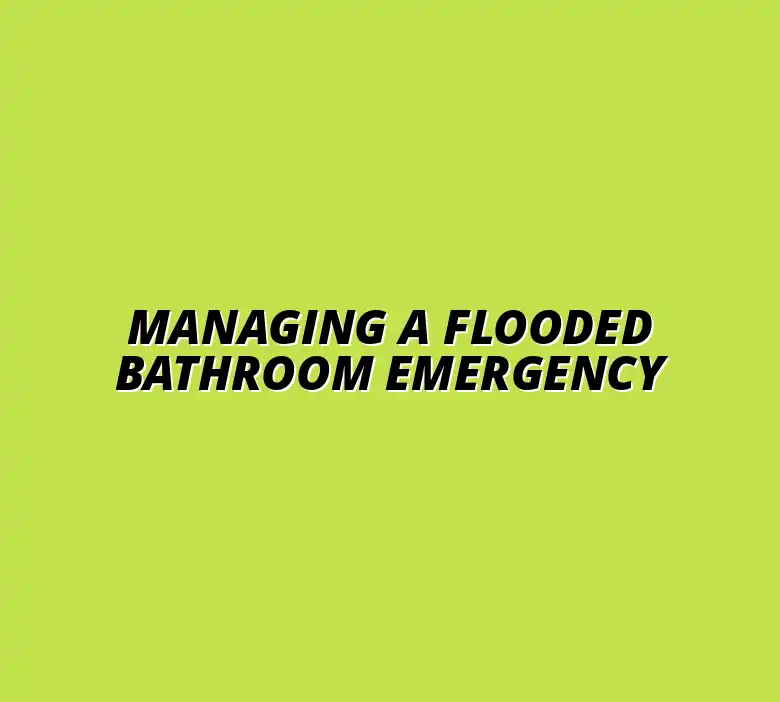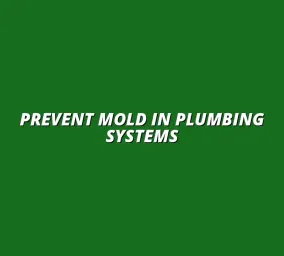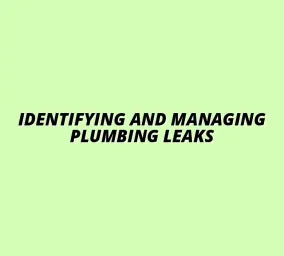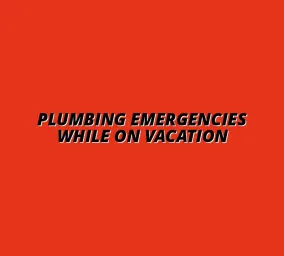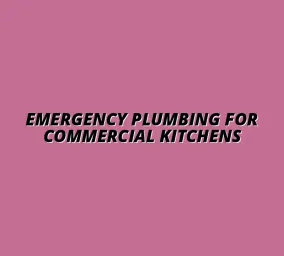Managing a Flooded Bathroom Emergency
Understanding Bathroom Flooding Emergencies and Their Causes
Bathroom flooding emergencies can be quite a hassle! Understanding the common causes of these issues is essential for preventing them. By being aware of the potential problems, you can take steps to protect your home and family.
Flooding can happen quickly, so knowing what to look for is crucial. Whether it's a clogged drain, a burst pipe, or a malfunctioning fixture, being informed can make a world of difference. Let's dive into the details and help you stay prepared!
Common Causes of Bathroom Flooding Emergencies
Bathroom flooding can stem from various issues. Here are some common causes that I’ve come across:
- Clogged Drains Leading to Overflow
- Pipe Bursts and Leaks
- Malfunctioning Fixtures and Appliances
Clogged Drains Leading to Overflow
Clogs can occur for many reasons, such as hair, soap scum, or foreign objects. When these clogs build up, they can prevent water from draining properly. This blockage often causes water to overflow from sinks, tubs, or toilets, leading to a messy situation! If you're facing a clogged drain emergency, quick action is crucial.
To help avoid clogs, it’s essential to maintain your drains regularly. Simple steps like using drain covers can significantly reduce the amount of debris that goes down the drain. If you do notice signs of a clog, addressing them early can save you from a bigger problem later.
Pipe Bursts and Leaks
Pipe bursts can occur unexpectedly due to factors like freezing temperatures or aging plumbing. When pipes burst, they can release a significant amount of water into your bathroom. This sudden influx of water can cause extensive damage if not dealt with immediately. Learning how to fix a leaking bathroom pipe joint can be a valuable skill.
Leaks may also develop over time due to wear and tear or poor installation. Regular inspections of your plumbing system can help catch these issues before they escalate. If you suspect a leak, it’s best to act quickly to avoid costly repairs!
Malfunctioning Fixtures and Appliances
Sometimes, the fixtures or appliances in your bathroom can malfunction, leading to flooding. Toilets, sinks, and showers can develop issues like faulty valves or broken seals. These problems can cause continuous water flow, resulting in flooding. A quick fix for a leaking faucet can prevent a bigger problem.
To prevent these emergencies, it’s wise to regularly check your bathroom fixtures. Keep an eye out for signs of wear or damage, and don’t hesitate to replace any faulty parts. This proactive approach can save you from unexpected flooding incidents!
Recognizing the Signs of a Plumbing Emergency
When it comes to plumbing emergencies, early detection is crucial. Here are some signs to look out for:
- Unusual Sounds and Odors in the Bathroom
- Water Pooling in Unusual Areas
Unusual Sounds and Odors in the Bathroom
If you hear strange sounds like gurgling or hissing, it may indicate a plumbing issue. These noises can signal air trapped in pipes or water escaping from leaks. Additionally, unpleasant odors might suggest that wastewater is backing up or that there’s a leak. Knowing the warning signs of a plumbing emergency can save you from costly damage.
Paying attention to these signs can help you catch a problem early. If you notice anything unusual, it’s better to investigate sooner rather than later! Ignoring these signs could lead to bigger, more expensive issues down the line.
Water Pooling in Unusual Areas
Finding water pooling in places where it shouldn’t be is a clear indicator of a plumbing emergency. This could be around the base of the toilet, under the sink, or even on the floor. If you spot any unexpected wetness, it’s essential to act quickly!
Identify the area where the water is pooling and try to trace it back to its source. The sooner you address the issue, the better chance you have at minimizing damage. Remember, being proactive is key in these situations!
Steps for Effective Cleanup and Damage Control
When faced with a bathroom flooding emergency, time is of the essence. It’s essential to act quickly and carefully to minimize damage and ensure safety. The cleanup process can be daunting, but following a series of organized steps can make it manageable.
One of the first tasks is to remove standing water. Depending on the amount of water, you can use either manual methods or electric pumps. This step is crucial to prevent further water damage and mold growth in your bathroom.
Removing Standing Water Safely
To effectively remove standing water, there are different tools and methods you can use. Each method has its advantages depending on the situation. Here are some common tools to consider:
- Manual Pumps: Ideal for smaller areas, these pumps can help you extract water without needing electricity.
- Electric Pumps: For larger floods, these powerful pumps can quickly siphon out water and save time.
- Wet/Dry Vacuum: This versatile tool is great for sucking up water and debris at the same time.
After removing the bulk of the water, use some absorbent materials to soak up any remaining moisture. Towels, mops, or sponges can be effective here. Make sure to wear gloves to protect yourself from contaminants!
Using Manual and Electric Pumps
Manual pumps are straightforward and require no electricity, which makes them ideal during power outages. Just lower the pump into the water and start pumping! On the other hand, electric pumps can clear out large volumes of water quickly. Always follow the manufacturer’s guidelines for safe operation.
Whichever method you choose, ensure you have a backup plan in case one method doesn’t work as expected. Safety should always come first. Turn off the electricity in the area before using electric pumps, as water and electricity do not mix!
Drying Out the Affected Area
Once you’ve removed standing water, the next crucial step is to dry out the affected area completely. This helps prevent mold growth and further damage. Here are a few effective methods to ensure the bathroom dries swiftly:
- Dehumidifiers: Running a dehumidifier can significantly reduce moisture levels in the air.
- Fans: Use fans to circulate air and speed up the drying process.
- Heaters: If safe, applying gentle heat can help evaporate remaining moisture.
Proper ventilation is also critical during this time. Keeping windows open and doors ajar can help fresh air circulate, which aids in the drying process. Make sure to monitor the humidity levels so that you can adjust your drying methods accordingly!
Utilizing Dehumidifiers and Fans
Dehumidifiers work by pulling moisture from the air, making them invaluable in flood situations. Setting one up in your bathroom can help immensely. Don’t forget to empty the reservoir regularly to keep it working effectively!
Fans, on the other hand, help to promote airflow and speed up evaporation. Position fans strategically to ensure they blow air across the wet surfaces. Using both dehumidifiers and fans in tandem can make a significant difference.
Preventing Future Bathroom Flooding Emergencies
Taking proactive steps can help you prevent future flooding emergencies in your bathroom. Regular maintenance and awareness of your plumbing systems is essential to avoid unwanted surprises. Here’s how you can safeguard your home:
- Routine Inspections: Regularly check for leaks, corrosion, and other signs of wear and tear.
- Drain Cleaning: Schedule professional drain cleaning to prevent clogs.
- Educate Yourself: Know the signs of plumbing issues so you can act quickly.
By implementing these preventive measures, you can reduce the risk of flooding and keep your bathroom safe and functional!
Regular Maintenance of Plumbing Systems
Keeping your plumbing systems in good shape involves more than just fixing leaks. It’s important to schedule routine inspections and repairs. You can set up a maintenance plan with a trusted plumber! If you have a leaking water heater, knowing how to fix a leaking water heater is crucial.
Additionally, consider implementing preventive measures against clogs such as using drain strainers to catch hair and debris. Avoid flushing things down the toilet that don’t belong there—this simple act can prevent major flooding down the line.
Scheduling Routine Inspections and Repairs
Establishing a regular check-up schedule with a plumbing professional can help you catch potential issues before they escalate. During these inspections, they will look for:
- Signs of wear on pipes
- Corrosion or rust
- Drainage problems
By staying on top of these inspections, you can identify problems early and avoid costly repairs or emergencies! For kitchen plumbing issues, such as a clogged kitchen sink, similar preventative measures apply.
Common Myths About Plumbing Emergencies
There are many myths surrounding plumbing emergencies that can lead to confusion. It’s important to separate fact from fiction to ensure you’re making informed decisions. Let's debunk a couple of these common misconceptions:
- DIY Repairs are Always Safe: While some repairs can be done yourself, others should be left to professionals.
- Minor Leaks Don't Matter: Ignoring a small leak can lead to bigger problems down the road.
Understanding when to call a professional can save you time, money, and headaches. If you're ever in doubt, it’s best to consult an expert! For emergencies in Cotfon Common, Birmingham, consider contacting a plumber in Cotfon Common, Birmingham.
Debunking Misconceptions on DIY Repairs
Many homeowners believe they can fix any plumbing issue on their own. While some simple tasks like replacing a faucet or unclogging a drain can be manageable, others can lead to disaster if not handled properly. It’s always wise to assess your comfort level and knowledge before diving into repairs.
When in doubt, remember that calling a professional can often save you money in the long run. They have the tools and expertise to tackle even the trickiest problems!
Addressing Frequently Asked Questions About Bathroom Flooding
Bathroom flooding emergencies can cause a lot of stress and confusion. It’s natural to have questions about what to do and how to prevent these issues. Here are some common queries:
- What should I do if my bathroom floods at night?
- How can I tell if my plumbing problem is serious?
- What are the signs of water damage in my bathroom?
Addressing these questions can help you feel more prepared and knowledgeable about plumbing emergencies. It’s all about knowing what to look for and when to take action!
Final Thoughts on Handling Bathroom Flooding Emergencies
In conclusion, knowing how to handle bathroom flooding emergencies is essential for every homeowner. By following the steps outlined above, you can effectively manage the cleanup process and minimize damage. Remember, being proactive is key!
It’s also wise to develop an emergency plan. Having a clear strategy in place can make a world of difference when you’re faced with a plumbing disaster. Stay informed, stay prepared, and you’ll be ready to tackle any flooding emergency that comes your way!

